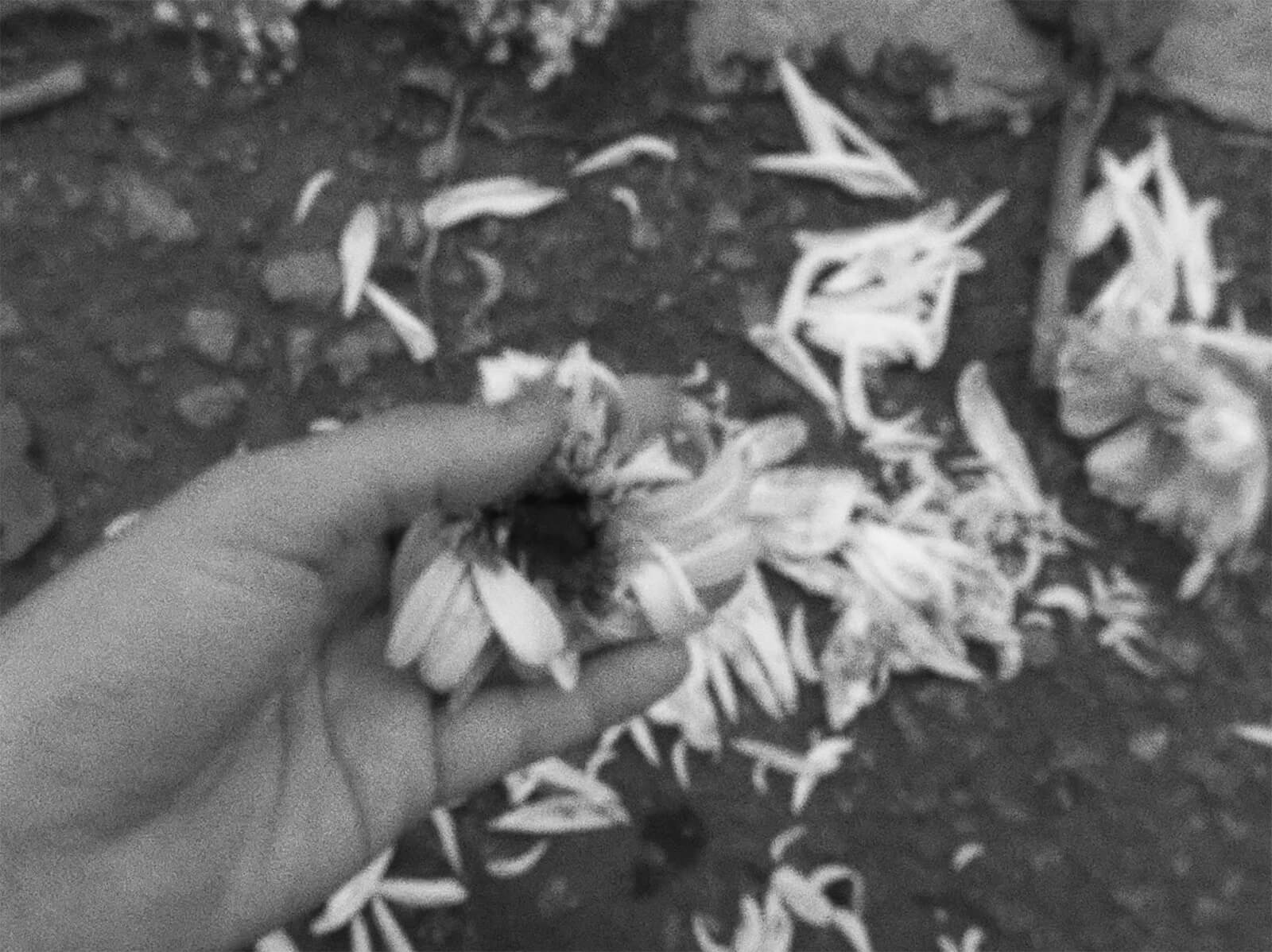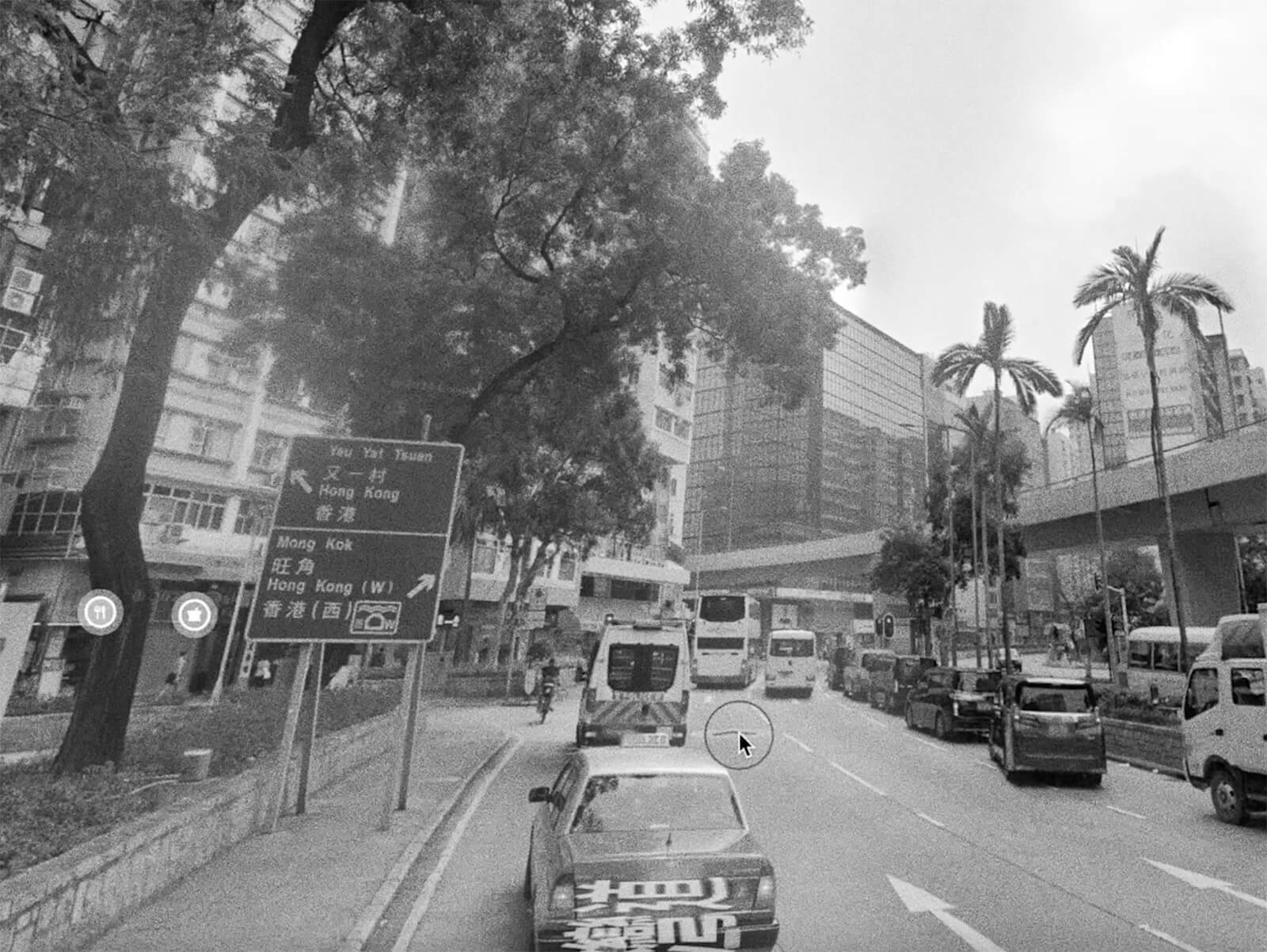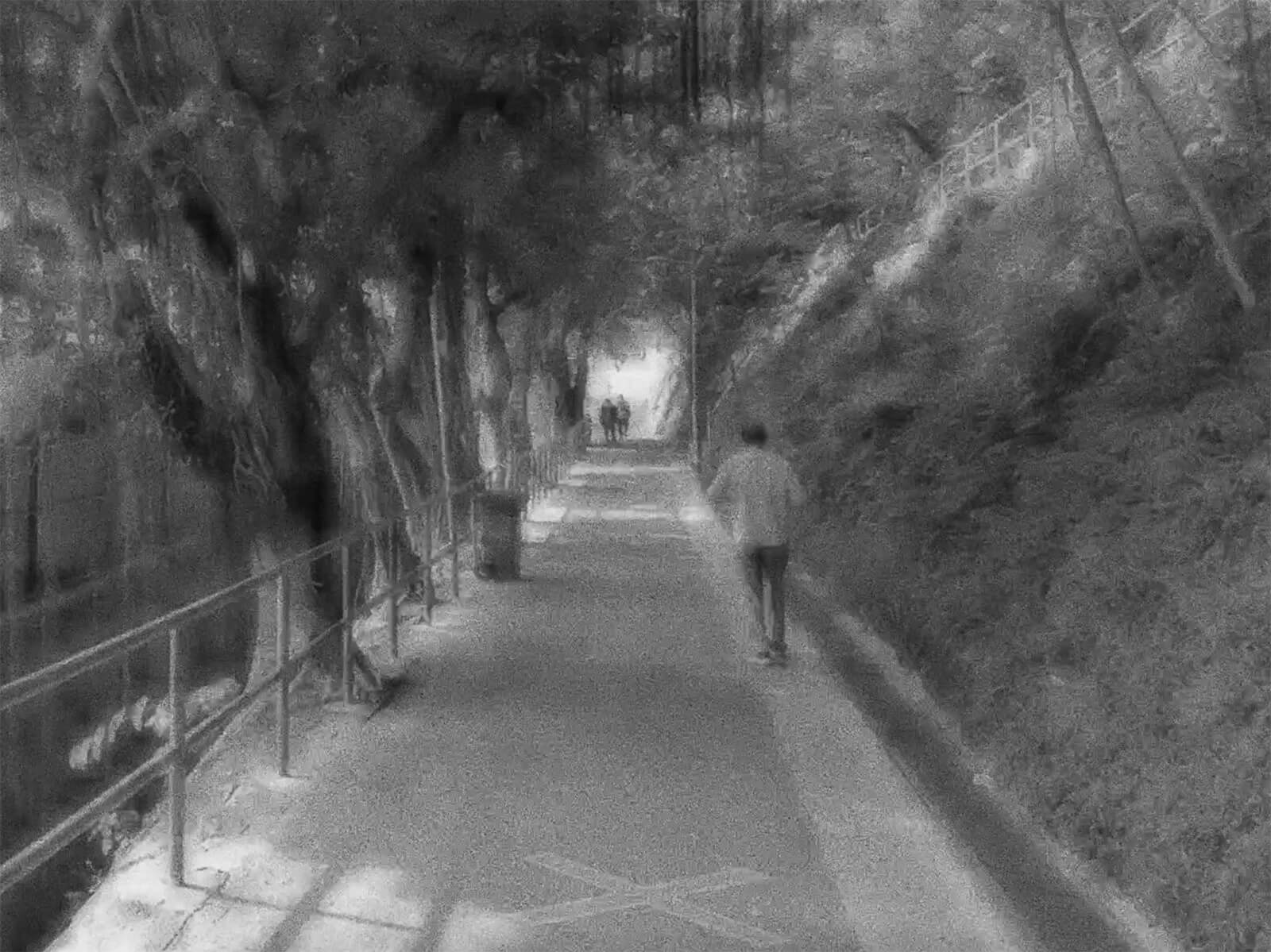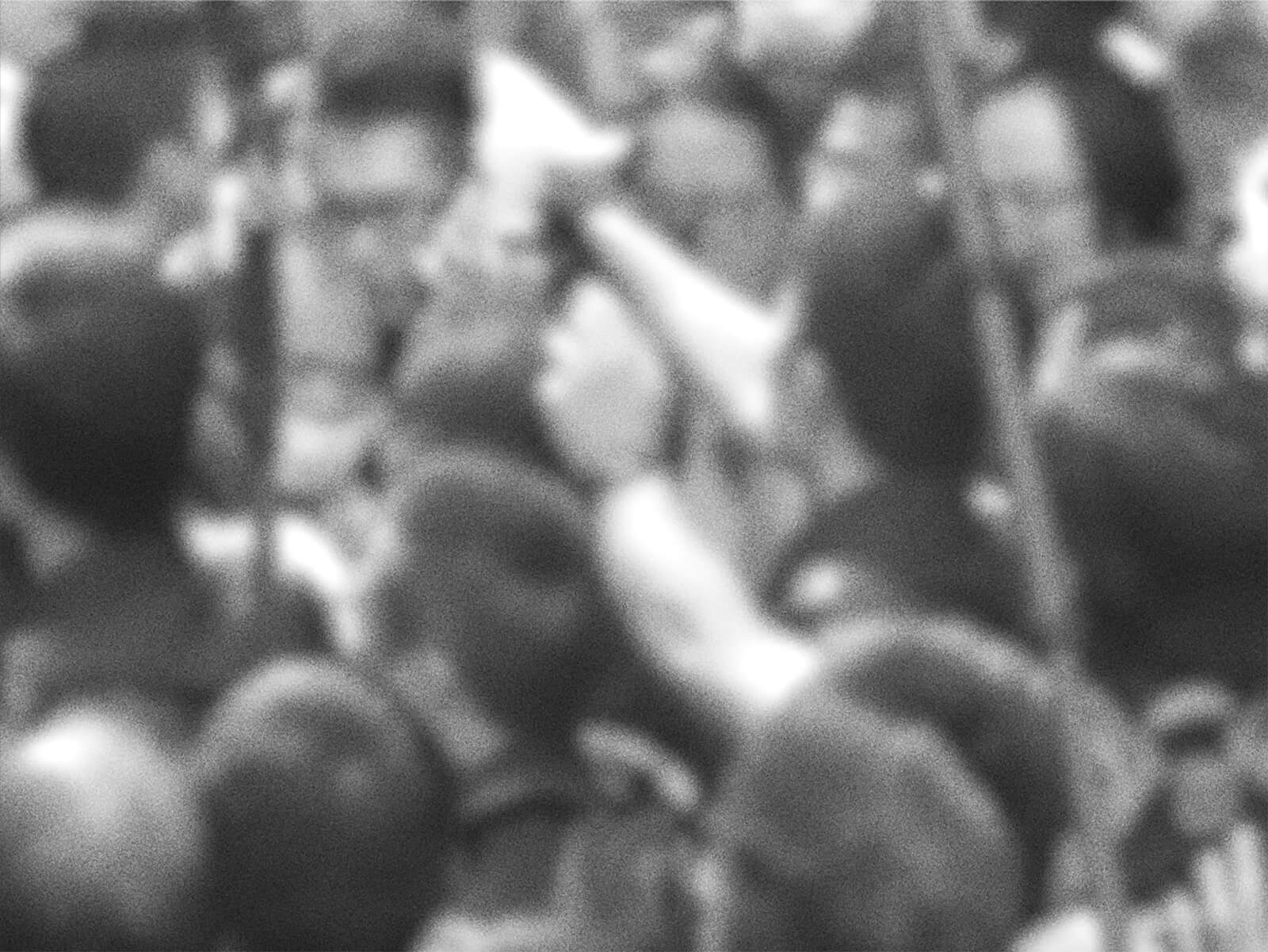ADFF:STIR's London Curtain Raiser sets the stage for 2026 with dialogue and community
by Jincy IypeOct 01, 2025
•make your fridays matter with a well-read weekend
by Avani Tandon VieiraPublished on : Aug 18, 2025
An aged but steady hand holds a paintbrush against a public wall. In practised strokes, it produces eyes, whiskers, ears: a crudely rendered cat. The act is hasty, liquid dripping in long rivulets from the tip of the brush. Before long, the cat will be gone. The liquid is water, the painter an elderly graffiti artist evading arrest. The only witnesses to this moment are the painter, the city walls and filmmaker Chan Hau Chun.
The old man is one of three protagonists of Chan’s essayistic moving image work Map of Traces (《記憶座標》), currently on view in her debut show at Hong Kong’s Empty Gallery. Born and based in Hong Kong, Chan’s body of work offers a considered engagement with place and memory. Map of Traces, a newly commissioned work, is the latest in a series of projects that probe the fraught intersections of belonging and visibility in her home country. Described in the exhibition’s press release as a work of “diaristic intimacy”, the film was produced in the watershed years after the 2019 protests, offering both a reflection on personal loss and a record of Hong Kong’s sociopolitical transformation.
Arriving at Empty Gallery’s location in an industrial building in the south of Hong Kong island, the visitor must ascend 19 stories and make their way through a dark, atmospheric antechamber, setting the tone for a space and a work that requires careful and deliberate navigation. In the main space, a handful of chairs form a close arc around a glowing screen, the sparsely populated room precipitating an intimate encounter between viewer and work. Over the next 30 minutes, Chan’s black and white work takes us on a meandering journey through a profoundly dislocated urban scape, telling the story of a place and moment that, in its fragmentary in-betweenness, seems to evade even its telling.
In Chan’s work, the idea of the trace is complicated, the artist grappling with a political reality in which erasure is both narrative and physical.

Writing on the tension between formal histories and memory-keeping, historian Pierre Nora argues that “modern memory […] relies entirely on the materiality of the trace, the immediacy of the recording, the visibility of the image”. A turn to the material, in Nora’s imagination, is prompted by a fundamental anxiety about disappearance, a fear that that which is not anchored in the tangible will be lost. In Chan’s work, the idea of the trace is complicated, the artist grappling with a political reality in which erasure is both narrative and physical. In the face of political transformation and a deliberate remaking of sites of memory (lieux de me'moire, in Nora’s phrasing), how do we hold on to the past?

Chan’s answer comes in the form of a delicate negotiation with visibility. The artist’s film is arranged in three movements, the narrative of the old man, Lau Tit Man, accompanied by two interrelated strains, each with a different protagonist. The first is presented as a digital wandering through Hong Kong, mediated by Google Street View and overlaid with a conversation with a friend in the diaspora. The second consists of an epistolary dialogue between Chan and an incarcerated person, addressed only as 'C.R.'. Across these strains, the focus remains not on narrative coherence or a total reclamation of the past, but on place memory as fragmentary; the artist’s project not one of making visible or permanent but of attending to the acts and gestures of those who elude, or must elude, the outside gaze.
Fundamental to Chan’s engagement with visibility is the form that memory takes in the midst of enforced silence. In a striking excerpt from her exchanges with C.R., presented in white text over a black background, the artist muses that “if history is always tied to events, then memory is like a hidden shape, waiting for the right moment to resurface”. Anchoring Map of Traces, and perhaps the most poignant of its encounters, this set of exchanges suggests that what is hidden or omitted may be deeply evocative. Much is left out of this epistolary moment: only Chan’s letters to C.R. are presented and she wonders, at one point in the exchange, about the possible words that have been delivered to her “veiled in black”, or redacted. The shape of memory, her statement suggests, is a negative image, an outline of absence rather than a definite presence. The imaginative intervention demanded by this absence draws the viewer into the process of meaning-making, the deferral or denial of expression becoming part of what is seen and heard.

In contrast with the insistently and necessarily analogue nature of Chan’s exchanges with C.R., the third movement of Map of Traces operates through the digital, examining the refraction of memory across distance. Guiding the viewer on a journey from her neighbourhood in Sham Shui Po through tree lined paths and to Nathan Road, Chan’s friend, now based in the U.K., makes observations that are at once light hearted and profound - speaking of the pastimes of old men at the harbour, a childhood memory of her father, the age of ancient Banyans by the water. Even as Google Street View provides a valuable connection to a now distant home, the distortions of the technological are evident: here a blurred face, there a woman caught mid-stride, her lower body ghostly. The most significant distortion, that of an erosion of identity, remains both unspoken and ever present. Veiled behind the friend’s seemingly innocuous recollections are more urgent truths: the conditions of exile, the impossibility of return, the time it takes for a city to become unrecognisable.
In negotiating the challenges of distance and absence, Map of Traces embraces the indistinctness produced by half a decade of upheaval. Accompanying the film’s multi-part narrative is a disjointed audio track that combines the steady beep of crosswalk signals with the sound of musical instruments, passing traffic, birdsong and silence. Frequently out of step with what the viewer is seeing, Chan’s auditory intervention serves as a denial of coherence, refusing a straightforward documentary function. As in the film’s auditory gestures, so in its visual ones. Hong Kong of 2019 appears in flashes: fallen flowers, shiny combat boots, grainy aerial footage of masses of people. In a short audio clip, an unknown speaker states that they are “documenting…the event”. Allusion is at the heart of Chan’s work, just as it is at the heart of the reality of which it speaks.

In one of the final moments of Map of Traces, a single arm hangs from a narrow, barred window. In a letter that precedes the shot, Chan tells C.R. that she has sent them photographs of a hill behind the detention centre in which they are held. She wonders whether, standing on this hill, she can hear the sounds of their guitar playing, or join them with an instrument of her own. It is not clear to the viewer whether the arm belongs to C.R. or whether this is the right hill or the right prison. Still, the haunting melody of a melodica fills the distance between the camera and the structure, a fleeting, fading mark of human connection. The shape of memory may be hidden, but it can appear, if briefly, as an arm in a narrow window or the fast-disappearing trace of water on a wall. If there is erasure, there is also something that remains - in the act, in the body.
‘Map of Traces’ by artist Chan Hau Chun is on view from June 7 - August 30, 2025, at Empty Gallery, Hong Kong.
The views and opinions expressed here are those of the author(s) and do not necessarily reflect the official position of STIR or its editors.
by Ranjana Dave Oct 03, 2025
Bridging a museum collection and contemporary works, curators Sam Bardaouil and Till Fellrath treat ‘yearning’ as a continuum in their plans for the 2025 Taipei Biennial.
by Srishti Ojha Sep 30, 2025
Fundación La Nave Salinas in Ibiza celebrates its 10th anniversary with an exhibition of newly commissioned contemporary still-life paintings by American artist, Pedro Pedro.
by Deeksha Nath Sep 29, 2025
An exhibition at the Barbican Centre places the 20th century Swiss sculptor in dialogue with the British-Palestinian artist, exploring how displacement, surveillance and violence shape bodies and spaces.
by Hili Perlson Sep 26, 2025
The exhibition at DAS MINSK Kunsthaus unpacks the politics of taste and social memory embedded in the architecture of the former East Germany.
 surprise me!
surprise me!
make your fridays matter
SUBSCRIBEEnter your details to sign in
Don’t have an account?
Sign upOr you can sign in with
a single account for all
STIR platforms
All your bookmarks will be available across all your devices.
Stay STIRred
Already have an account?
Sign inOr you can sign up with
Tap on things that interests you.
Select the Conversation Category you would like to watch
Please enter your details and click submit.
Enter the 6-digit code sent at
Verification link sent to check your inbox or spam folder to complete sign up process



by Avani Tandon Vieira | Published on : Aug 18, 2025
What do you think?